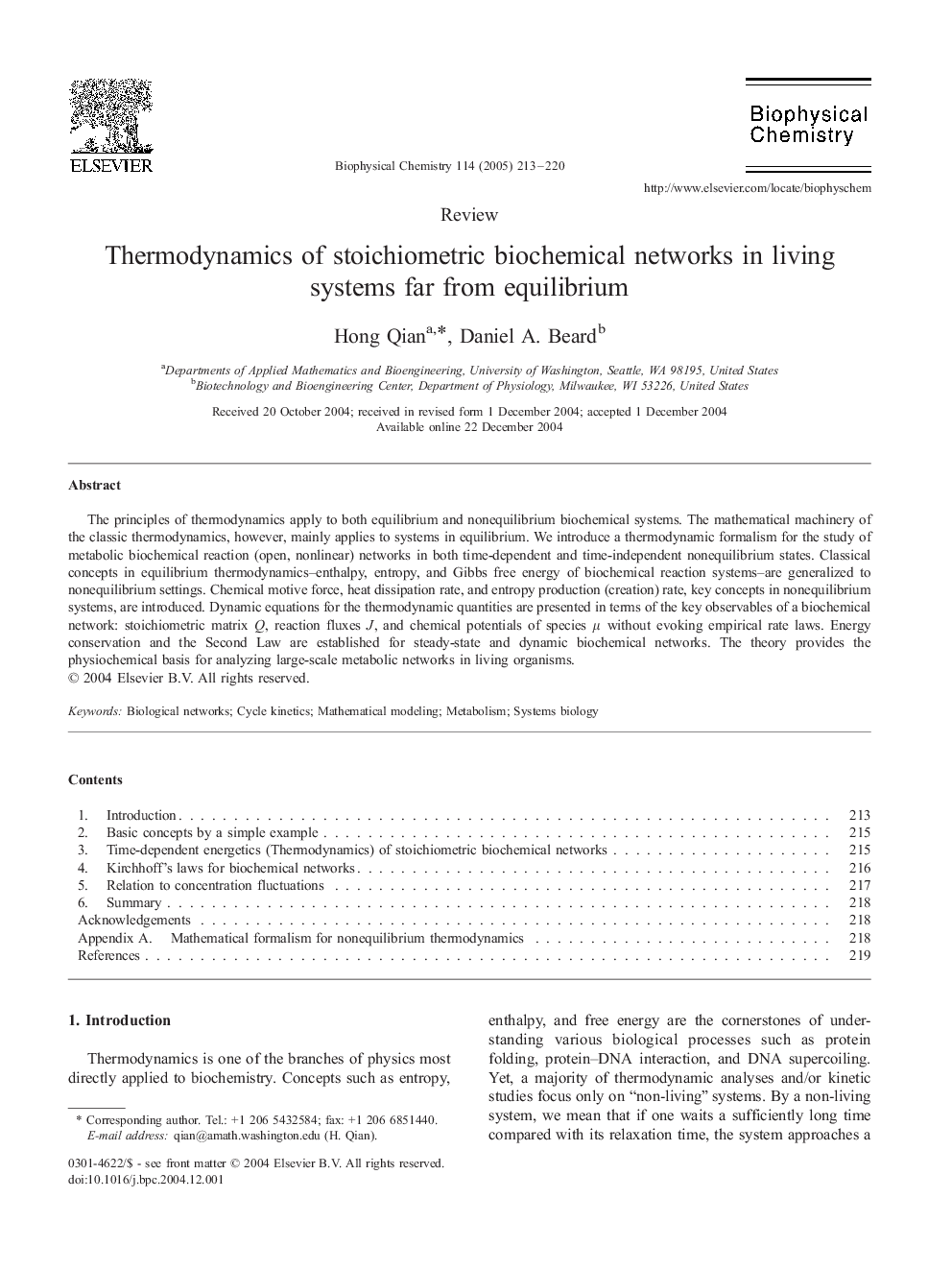| Article ID | Journal | Published Year | Pages | File Type |
|---|---|---|---|---|
| 9573393 | Biophysical Chemistry | 2005 | 8 Pages |
Abstract
The principles of thermodynamics apply to both equilibrium and nonequilibrium biochemical systems. The mathematical machinery of the classic thermodynamics, however, mainly applies to systems in equilibrium. We introduce a thermodynamic formalism for the study of metabolic biochemical reaction (open, nonlinear) networks in both time-dependent and time-independent nonequilibrium states. Classical concepts in equilibrium thermodynamics-enthalpy, entropy, and Gibbs free energy of biochemical reaction systems-are generalized to nonequilibrium settings. Chemical motive force, heat dissipation rate, and entropy production (creation) rate, key concepts in nonequilibrium systems, are introduced. Dynamic equations for the thermodynamic quantities are presented in terms of the key observables of a biochemical network: stoichiometric matrix Q, reaction fluxes J, and chemical potentials of species μ without evoking empirical rate laws. Energy conservation and the Second Law are established for steady-state and dynamic biochemical networks. The theory provides the physiochemical basis for analyzing large-scale metabolic networks in living organisms.
Related Topics
Physical Sciences and Engineering
Chemistry
Physical and Theoretical Chemistry
Authors
Hong Qian, Daniel A. Beard,
